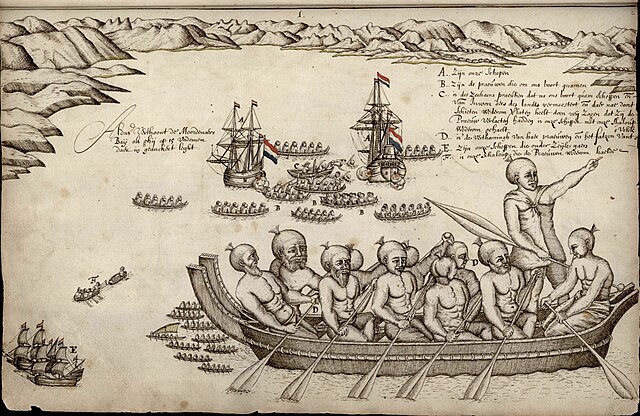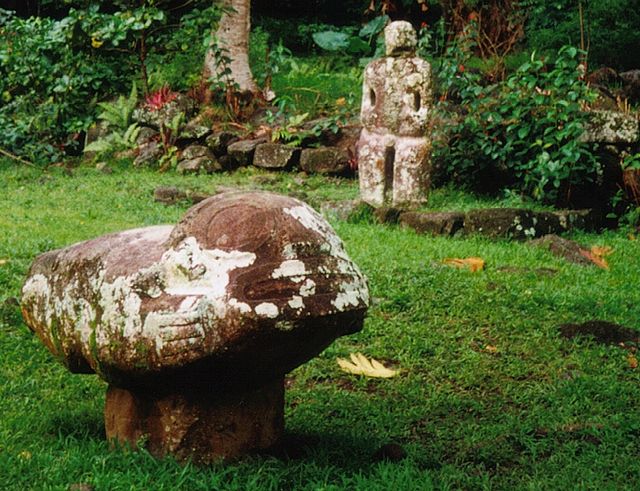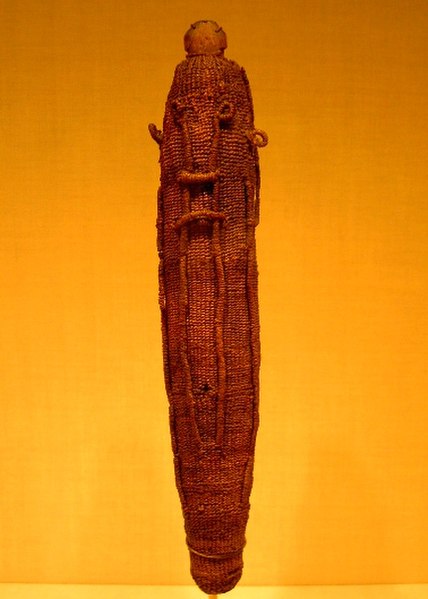Māori mythology and Māori traditions are two major categories into which the remote oral history of New Zealand's Māori may be divided. Māori myths concern tales of supernatural events relating to the origins of what was the observable world for the pre-European Māori, often involving gods and demigods. Māori tradition concerns more folkloric legends often involving historical or semi-historical forebears. Both categories merge in whakapapa to explain the overall origin of the Māori and their connections to the world which they lived in.
Six major departmental atua represented by wooden godsticks: left to right, Tūmatauenga, Tāwhirimātea, Tāne Mahuta, Tangaroa, Rongo-mā-Tāne, and Haumia-tiketike.
Detail from a ridgepole (tāhūhū) in a Ngāti Awa wharenui. Believed to represent one of two ancestors: Tūwharetoa or Kahungunu.
First European impression of (Ngāti Tūmatakōkiri) Māori, at Murderers' Bay, 1642.
Polynesian mythology encompasses the oral traditions of the people of Polynesia together with those of the scattered cultures known as the Polynesian outliers. Polynesians speak languages that descend from a language reconstructed as Proto-Polynesian – probably spoken in the Tonga and Samoa area around 1000 BC.
Tiki Makiʻi Tauʻa Pepe (foreground) and Tiki Manuiotaa (background) from the meʻae Iʻipona on Hiva Oa in the Marquesas Islands
A sacred god figure wrapping for the war god 'Oro, made of woven dried coconut fibre (sennit), which would have protected a Polynesian god effigy (to'o) made of wood





